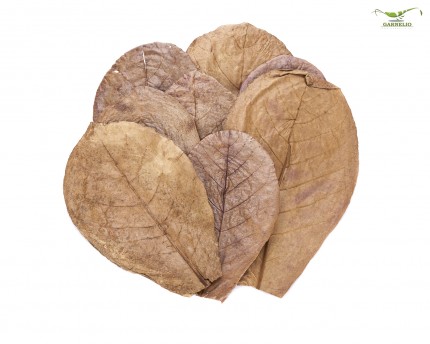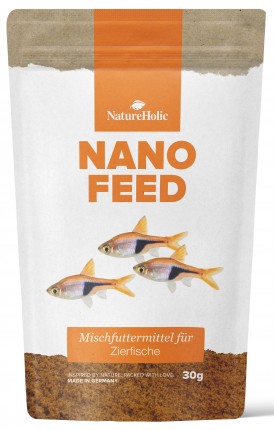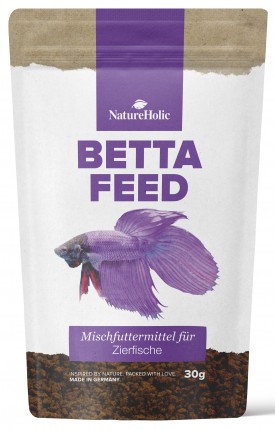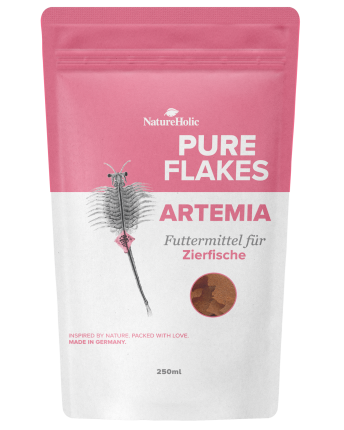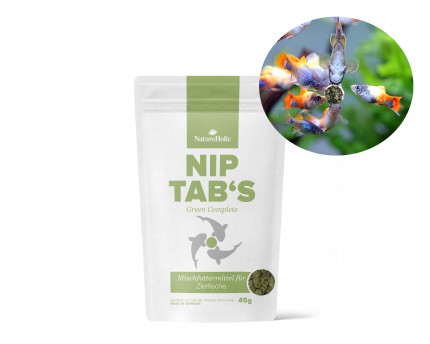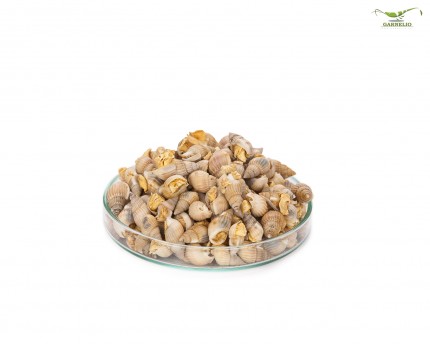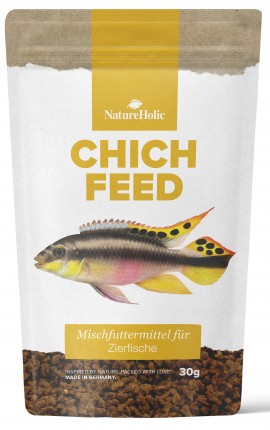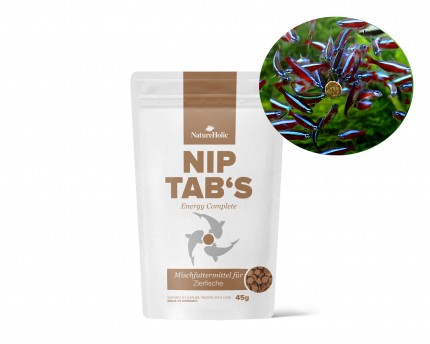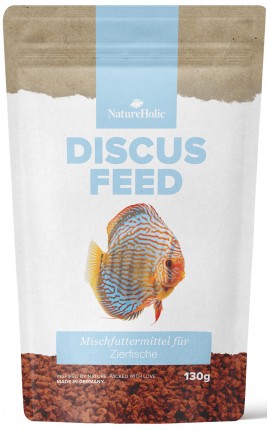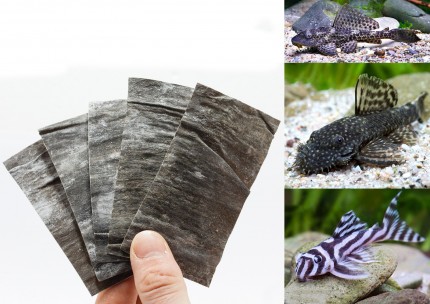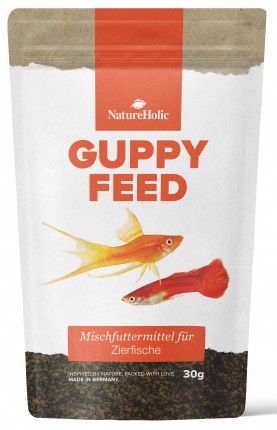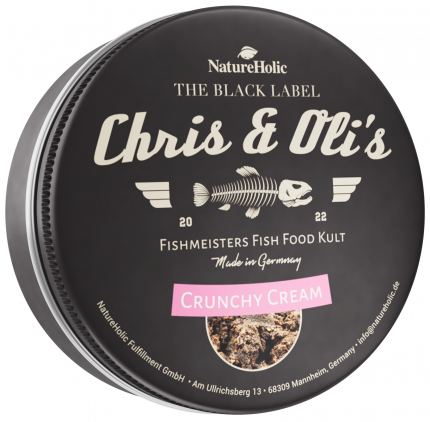Many ornamental fish that we know from aquaristics are more or less omnivores. These include, for example, the colorful livebearers such as guppies and Endler guppies (Poecilia reticulata and Poecilia wingei), mollies (Poecilia sphenops), platies (Xiphophorus maculatus,), the barbs and danios such as the Sumatran barb and the moss barb (both Puntius cf. tetrazona), the guinea fowl danio (Danio margaritatus), the mosquito dwarf danio (Boraras brigittae), tetras such as the popular red neon (Paracheirodon innesi), star-spotted tetras (Pristella maxillaris), blood tetras (Hyphessobrycon eques), copper tetras (Hasemania nana), cichlids such as the genus Julidochromis and many more. In the wild, these fish nibble on algae growth, hunt mosquito larvae and other small aquatic animals, they help themselves to foliage and possibly even fruits that fall into the water, and they eat approach foods, i.e. insects that have landed on the water surface or flower pollen ... all of this should be reflected in a good balanced fish food.
In addition to the omnivores among the ornamental fish, there are also the specialists: The aufwuchsfressern include algae-eating sucker catfish / loricariid catfish (for example, the popular and ubiquitous antenna catfish Ancistrus sp., the honeycomb shield catfish L83 Glyptoperichthys gibbiceps, the ear lattice catfish Otocinclus sp. and other small and large catfish often referred to as disc cleaners) also most mbuna cichlids from Lake Malawi. In nature, these cichlids also eat mainly the growth on the rocks between which they live, but in the process - just like the catfish - they also ingest quite a lot of small organisms such as small crustaceans and also bacterial films,thus eatinga fair amount of protein along with the algae. Mbuna include many very popular cichlids such as various Labidochromis species, various Cynotilapia, Pseudotropheus and many other popular cichlids from Lake Malawi in East Africa. For mbuna there is special mbuna food, while sucking catfish / loricariids like to be fed with fast sinking catfish bars or also the new cookies for aufwuchs feeding catfish. Bottom dwellers have nothing to gain from floating food. In addition, it should be noted that especially the loricariids have a high demand for raw fiber and therefore root wood should always be present in a catfish aquarium.
Other cichlids such as the Frontosa, the genera Lamprologus and Altolamprologus from Lake Tanganyika and Aulonocara, Nimbochromis and Placidochromis from Lake Malawi are, along with many other cichlid species, predators and thus pure carnivores. Fighting fish (Betta splendens, Betta albimarginata, Betta imbellis, Betta smaragdina and many more) also belong to this group, as do the armored catfish from the genus Corydoras, the predatory tetras and predatory catfish. The carnivores among the aquarium fish require only a very small amount of plant food in their diet, just enough to match the gut contents of their prey, which consist mainly of plant food.
Then, of course, there are the pure herbivores among the fish. Their needs must of course also be taken into account in the choice of food. These include, for example, the disc tetras and the eyespot cichlids of the genus Heros.
The needs of all these different species of ornamental fish are taken into account by the various ornamental fish foods that you will find here. The selection is huge, here every fish will be happy!

